Biology
The human immune system is made up of the organs and tissues involved in destroying pathogens inside the body.
There are 2 main groups of cells involved:
? phagocytes: ingest and digest pathogens or infected cells;
? lymphocytes:
- recognise specific pathogens through interaction with receptors in their cell surface membranes
- respond in one of several ways, for example by secreting antibodies.
Phagocytes
Phagocytes are produced in the bone marrow by the mitotic division of precursor cells. This produces cells that develop into monocytes or neutrophils.
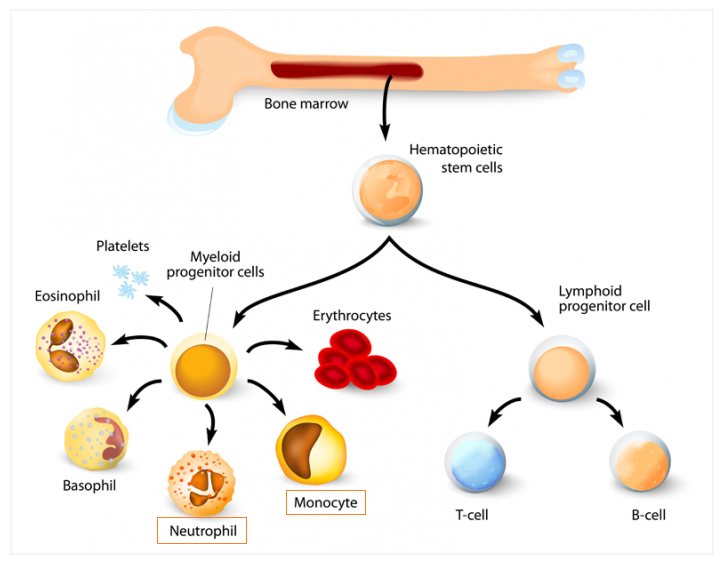
Monocytes are inactive cells which circulate in the blood. They eventually leave the blood, often as the result of encountering chemical signals indicating that bacteria or viruses are present. As monocytes mature, they develop more RER, Golgi apparatus and lysosomes. When they leave the blood they become macrophages.

They engulf bacteria by endocytosis and digest them inside phagosomes. Monocytes and macrophages can live for several months.
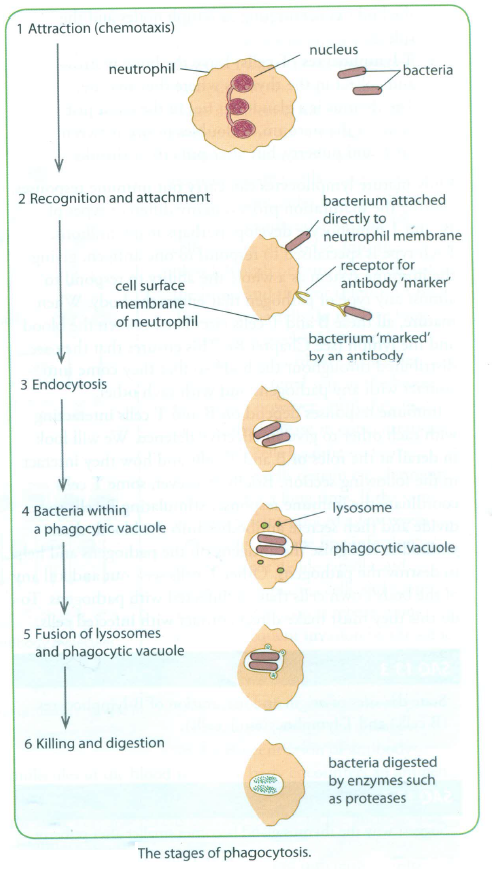
Similar precursor cells in bone marrow produce neutrophils. These also travel in blood. They leave the blood in large numbers at sites of infection and engulf and digest bacteria in a similar way to macrophages. A neutrophil lives for only a few days.
Several different types of cell, including macrophages, place antigens of pathogens they have encountered in their cell surface membranes, where there is a good chance that a B-lymphocyte or T-lymphocyte may encounter them. These cells are called antigen-presenting cells (APC).
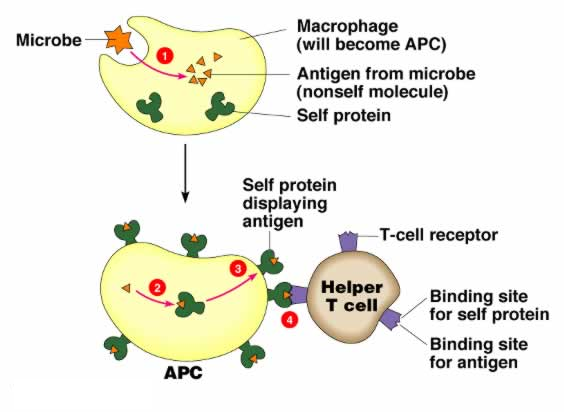
- # 63 Summary Of Immunity
1 Phagocytes and lymphocytes are the cells of the immune system. 2 The diagram shows how to recognise phagocytes and lymphocytes in microscope slides and photomicrographs of blood. 3 Phagocytes originate in the bone marrow and are produced there throughout...
- # 61 Action Of T-lymphocytes
T-lymphocytes include T helper cells and T killer cells. Both of these types of cell place their specific receptors in their cell surface membranes. On encountering the relevant antigen, they are activated and divide by mitosis to form...
- # 60 Action Of B-lymphocytes
A B-lymphocyte places some of its specific receptor molecules in its cell surface membrane. If it encounters an antigen that binds with this receptor, the B-lymphocyte is activated. It divides repeatedly by mitosis to produce a clone of genetically identical plasma...
- #59 The Immune Response - Lymphocytes
Lymphocytes, unlike phagocytes, act against specific pathogens. Each lymphocyte contains a set of genes that codes for the production of a particular type of receptor. We have many million different types, each producing just one type of receptor....
- #57 Immunity - Syllabus 2015
? The immune system ? Vaccination Candidates should be able to: (a) [PA] recognise phagocytes and lymphocytes under the light microscope; (b) state the origin and describe the mode of action of phagocytes (macrophages and neutrophils); (c) describe...
Biology
# 58 The immune system - Phagocytes
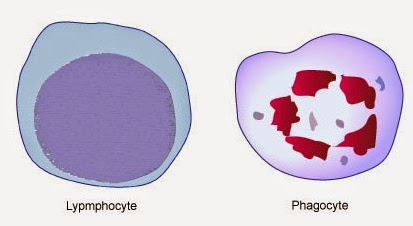 |
| Credit: Pass My Exams. |
There are 2 main groups of cells involved:
? phagocytes: ingest and digest pathogens or infected cells;
? lymphocytes:
- recognise specific pathogens through interaction with receptors in their cell surface membranes
- respond in one of several ways, for example by secreting antibodies.
Phagocytes
Phagocytes are produced in the bone marrow by the mitotic division of precursor cells. This produces cells that develop into monocytes or neutrophils.



 |
| Macrophage engulfing bacteria. Credit: Biology Helper |
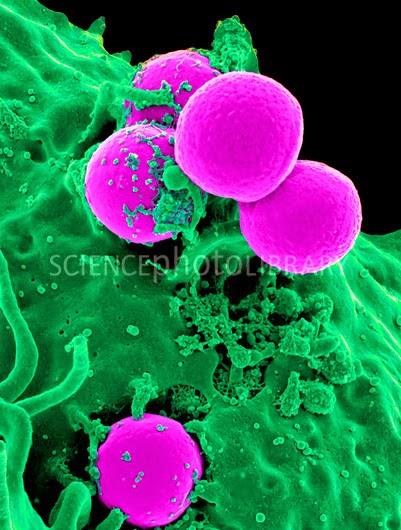 |
| Coloured scanning electron micrograph (SEM) of a neutrophil white blood cell (green) engulfing methicillin-resistant Staphylococcus aureus bacteria (MRSA, pink). Credit: Science Photo Library. |
Phagocytes are able to act against any invading organisms. Their response is non-specific.
Several different types of cell, including macrophages, place antigens of pathogens they have encountered in their cell surface membranes, where there is a good chance that a B-lymphocyte or T-lymphocyte may encounter them. These cells are called antigen-presenting cells (APC).

Syllabus 2015 ? The immune system (a) [PA] recognise phagocytes and lymphocytes under the light microscope; (b) state the origin and describe the mode of action of phagocytes (macrophages and neutrophils); |
Syllabus 2016 11.1 The immune system The immune system has non-specific and specific responses to pathogens. Auto-immune diseases are the result of failures in the system to distinguish between self and non-self. a) state that phagocytes (macrophages and neutrophils) have their origin in bone marrow and describe their mode of action c) describe and explain the significance of the increase in white blood cell count in humans with infectious diseases and leukaemias |
- # 63 Summary Of Immunity
1 Phagocytes and lymphocytes are the cells of the immune system. 2 The diagram shows how to recognise phagocytes and lymphocytes in microscope slides and photomicrographs of blood. 3 Phagocytes originate in the bone marrow and are produced there throughout...
- # 61 Action Of T-lymphocytes
T-lymphocytes include T helper cells and T killer cells. Both of these types of cell place their specific receptors in their cell surface membranes. On encountering the relevant antigen, they are activated and divide by mitosis to form...
- # 60 Action Of B-lymphocytes
A B-lymphocyte places some of its specific receptor molecules in its cell surface membrane. If it encounters an antigen that binds with this receptor, the B-lymphocyte is activated. It divides repeatedly by mitosis to produce a clone of genetically identical plasma...
- #59 The Immune Response - Lymphocytes
Lymphocytes, unlike phagocytes, act against specific pathogens. Each lymphocyte contains a set of genes that codes for the production of a particular type of receptor. We have many million different types, each producing just one type of receptor....
- #57 Immunity - Syllabus 2015
? The immune system ? Vaccination Candidates should be able to: (a) [PA] recognise phagocytes and lymphocytes under the light microscope; (b) state the origin and describe the mode of action of phagocytes (macrophages and neutrophils); (c) describe...
